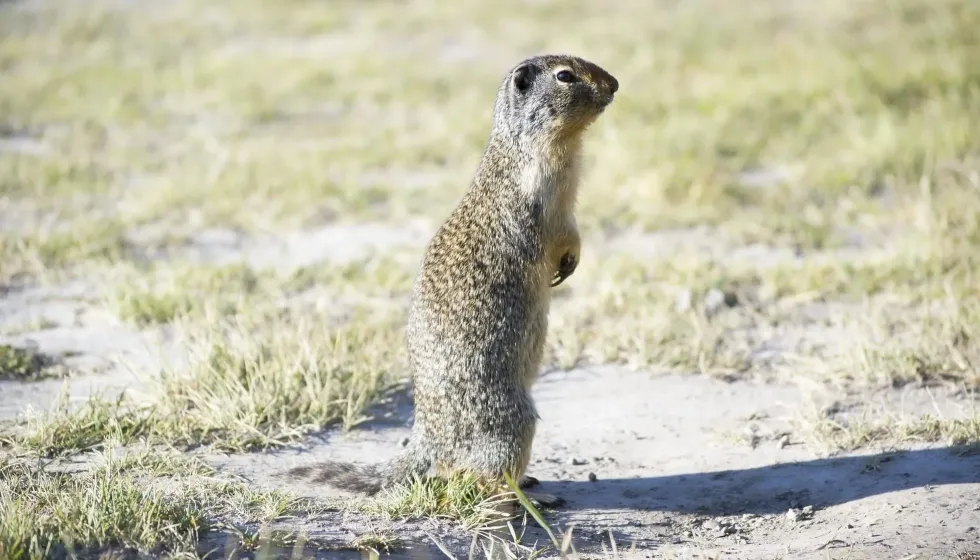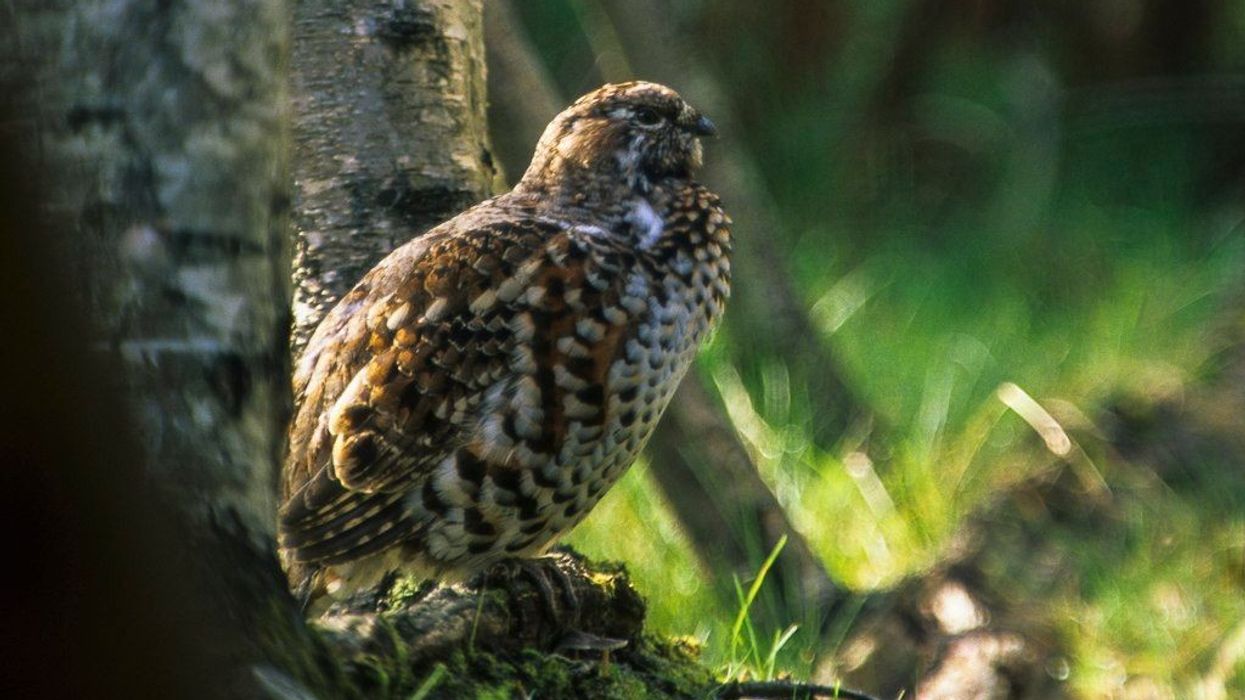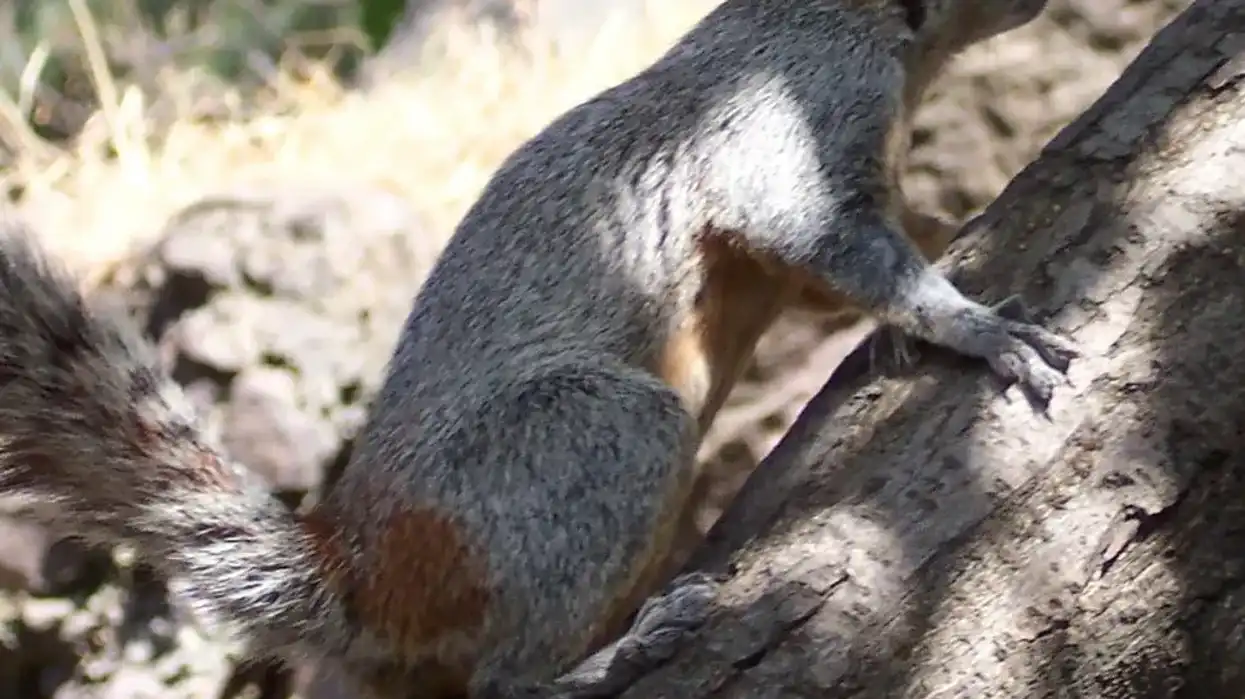Arctic ground squirrels are a type of ground squirrel found solely in the North American region. One of the biggest American cities that they are found in is Alaska, all the way from the north to the south and from the east to the west.
Many people are also aware of their existence in the Yukon territory in Canada. Some of the biggest Arctic ground squirrel predators include foxes, bears, humans, falcons, and eagles who come after their young.
To protect their young, Arctic ground squirrels create burrows and live in colonies that are situated in habitats such as tundra, grasslands, or on mountain slopes.
The Arctic ground squirrel (Spermophilus parryii) is also known for their hibernation. These squirrels spend months in hibernation during the cold winter.
If you would like to read and learn more about them, scroll down. For information regarding other animals, take a look at antelope squirrel and red squirrel facts too.
Arctic Ground Squirrel Interesting Facts
What type of animal is an Arctic ground squirrel?
Arctic ground squirrels are categorized as the biggest North American ground squirrels in the Northern Hemisphere. They are big hibernators and spend close to seven to eight months every year in hibernation mode. Before hibernation, they gain a substantial amount of weight.
What class of animal does an Arctic ground squirrel belong to?
Arctic ground squirrels belong to the mammal class of animals, and one can find them in various northern regions of the United States, such as Alaska, as well as in the Yukon territory in Canada. They are often referred to as 'parka' squirrels because their fur is known to be similar to that used for winter clothing gear.
How many Arctic ground squirrels are there in the world?
There is currently no definite number given to the number of Arctic ground squirrels that are present throughout the world. However, the IUCN Red List has categorized this species in the Least Concern category, so one can assume that they are not critically endangered.
Where does an Arctic ground squirrel live?
Arctic ground squirrels reside throughout the Arctic tundra, as well as in grasslands, meadows, and lakeshores throughout Alaska and northern Canada.
What is an Arctic ground squirrel's habitat?
They hold a preference for areas that have well-drained soil. They live in underground burrows where they can hibernate and stay safe from predators in the tundra region.
Who do Arctic ground squirrels live with?
Arctic ground squirrels live in colonies that allow them to be safe from predators. Male Arctic ground squirrels will generally become territorial around certain regions and groups of squirrels, and protect them by acting as an alpha guardian. They stay together in colonies with hundreds of other Arctic ground squirrels and are led by a few dominant males.
How long does an Arctic ground squirrel live?
They live an average of eight to 10 years and spend the majority of the year hibernating due to the cold climate. Since they live in large colonies and spend the majority of the year hibernating, they have a large safety net that defends them against potential predators and keeps them alive for longer.
How do they reproduce?
The mating season for Arctic ground squirrels has its genesis in late April and early May when male Arctic ground squirrels and female Arctic ground squirrels emerge from hibernation. Most males and females lose a large percentage of the fat on their body weight that they accumulated before hibernation.
They engage in a polygynous system of mating that has a duration of around two weeks. Single males are in charge of defending areas with multiple female Arctic ground squirrels.
Males try to mate with multiple females, and they tend to showcase behavior that is aggressive and territorial.
The gestation period for females lasts 25 to 30 days, and females produce a litter that ranges anywhere from two to 10 young babies. Within eight to 10 weeks, the young achieve sexual maturity and leave the burrows to live their independent lives.
What is their conservation status?
The IUCN Red List has categorized this species in the Least Concern category. Over the last couple of years, there has been a decrease in the number of humans hunting Arctic ground squirrels. We can assume that there is a healthy number of members in their species.
Arctic Ground Squirrel Fun Facts
What does the Arctic ground squirrel look like?
An Arctic ground squirrel has a coat that is either beige or tan and a back that is filled with white spots. They have a cylindrical frame, a small face, and a dark tail.
Their forearms and hind legs are strong, and their sharp claws help them in digging and foraging for food. They have rounded heads and ears and strong bodies that can survive any Arctic ground squirrel habitat, such as tundra.
How do they communicate?
They communicate through alarm calls and chatter calls to each other. These calls can signal or communicate danger or be a mating call. They go from three-note chatters to five-note chatters.
How big is an Arctic ground squirrel?
The length of an Arctic ground squirrel ranges from 13.07 to 19.56 in (332-495 mm). In comparison to tree squirrels and other squirrel species, the Arctic ground squirrel tends to be a little bushier and is the largest among all ground squirrels in all of North America, with males outsizing females as well.
How fast can an Arctic ground squirrel run?
It is assumed that ground squirrels can run at a speed of 20 mph (32 kph). Their speed comes into play when they emerge from hibernation and have to protect other females during the mating season, not just from predators but also from other male squirrels within their species.
How much does an Arctic ground squirrel weigh?
Arctic ground squirrels generally weigh around 1.15 to 3.30 lb (524-1500 g). However, their weight fluctuates depending on the season and their body temperature.
Before hibernation, most Arctic ground squirrels tend to gain weight to prepare for the hibernation period and make sure that they have enough nutrients to not let their low body temperature reach a deadly level. Male Arctic ground squirrels also become aggressive and infanticidal as their body bears the brunt of their physical and mental duress.
What are the male and female names of the species?
There are no gender-specific terms for these North American Arctic ground squirrels, and both sexes are referred to as the Arctic ground squirrels.
What would you call a baby Arctic ground squirrel?
A baby Arctic ground squirrel is called a young pup or kit before it reaches full maturity.
What do they eat?
Arctic ground squirrels are omnivores, so they consume a variety of seeds, berries, stems, leaves, fruits, plants, and mushrooms. They also eat eggs, small vertebrates, and invertebrates, as well as hares, lemmings, and even carrion.
They are easily able to find these options in a city like Alaska. They usually stock up right before winter so that they are decently full before the winter and have no problems keeping their body warm.
Are they dangerous?
Since Arctic ground squirrels are running around only for a couple of months out of the year before their hibernation, they are already a lower threat than many other predators that do not hibernate. As predators, they are dangerous for smaller animals and invertebrates which cannot fend themselves against the Arctic ground squirrels.
Male Arctic ground squirrels also tend to become aggressive and dangerous during mating season.
Would they make a good pet?
Since they are wild creatures who are used to extremely cold climates, it is not advised that they should be moved from their natural habitat to a domestic habitat.
The body temperatures of these North American Arctic ground squirrels cannot adapt to warmer climates, and they will be prone to injury and harm if they are taken out of their burrows or out of a winter climate.
Additionally, since they hibernate for the majority of the year, they would not be active or engaged pets.
Did you know...
The only ground squirrel species present in Alaska is the Arctic ground squirrel.
When do Arctic ground squirrels hibernate?
Arctic ground squirrels hibernate starting from August or September to April or May, during which they spend most of the winter laying down in their burrows.
To stock up for their hibernation period, squirrels start stocking up during early summer. During hibernation, the body temperature and brain temperatures of both males and females drop below freezing, and squirrels stop their blood from freezing by a method called supercooling.
At the end of their complete hibernation phase, they take three hours to wake up, and within a day, they're back to normal.
How do Arctic ground squirrels survive?
They are very agile creatures who have very high protective instincts and communal harmony. Staying close together in colonies helps them survive against any potential predators.
They also know how to burrow in places that can keep them safe from potential enemies. Dominant male Arctic ground squirrels tend to get very territorial over females as well as their young and help in the safety and protection of the whole community.
Here at Kidadl, we have carefully created lots of interesting family-friendly animal facts for everyone to discover! Learn more about some other mammals including pine marten or black rats.
You can even occupy yourself at home by drawing one on our Arctic ground squirrel coloring pages.










